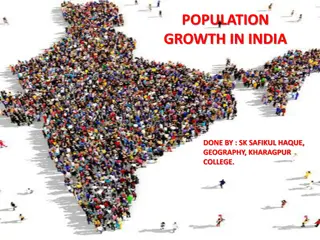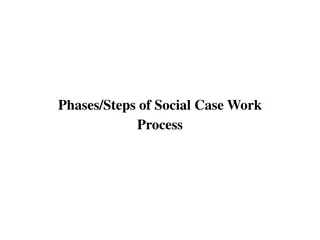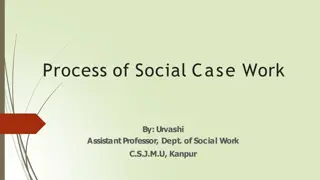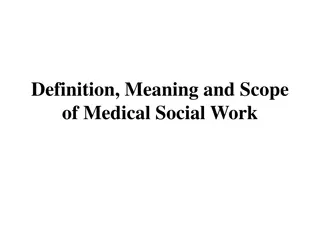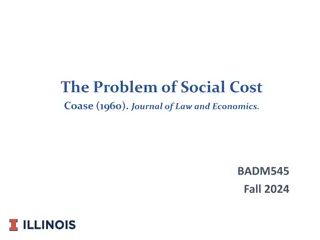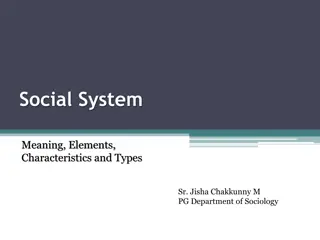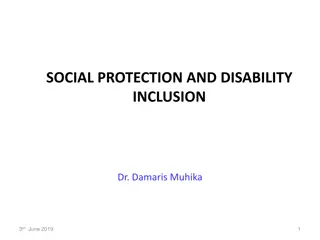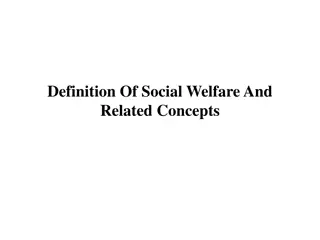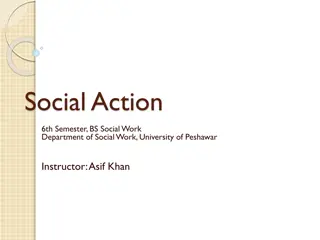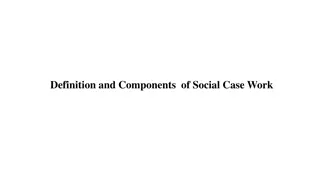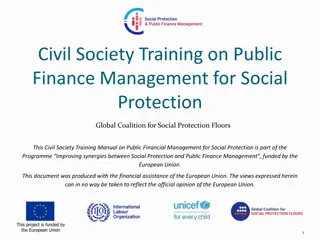Understanding Overpopulation as a Social Problem
Overpopulation presents challenges such as resource depletion, poverty, illiteracy, and environmental hazards. Factors contributing to overpopulation include birth rates, poverty, illiteracy, lack of family planning, and immigration. Effects of overpopulation include strained natural resources, environmental degradation, and economic imbalances.
Download Presentation

Please find below an Image/Link to download the presentation.
The content on the website is provided AS IS for your information and personal use only. It may not be sold, licensed, or shared on other websites without obtaining consent from the author. Download presentation by click this link. If you encounter any issues during the download, it is possible that the publisher has removed the file from their server.
E N D
Presentation Transcript
Overpopulation & Under Overpopulation & Under Population as Social Problem Population as Social Problem
Overpopulation: Overpopulation: The term overpopulation means too great a population for a given region to support. There may be two causes: (i) population growth exceeds the existing resource base; (ii) existing resources have been depleted. Some authors distinguish absolute overpopulation (where the absolute limit of production has been attained but standards of living remain low) from relative overpopulation (where present production does not support the population but the production can be augmented).
Causes of Over Causes of Over- -Population: Population: Birth and Death rates: Due to improved technology, efficient healthcare and medical facilities global birth rates have soared. The probability of infants surviving beyond the age of five has increased too. Better health care has led to a reduction in mortality rates which causes a lot of growth in the overall population. Poverty: Poverty is also indicative of over population. Economically stunted nations with low income rates don t have the capacity or ability to support growing populations. The mentality of groups or families living below the poverty line not helpful either. They try to cope with poverty by increasing the size of their respective families and increase their income.
Illiteracy and lack of family planning: Literacy and growth rates are directly correlated to each other. Literacy rates in developing nations are pretty low due to their economy being primarily agro-based. Increasing literacy rates improves the general awareness of people and changes their social attitudes and attitudes towards birth control. Lack of efficient and enforced policies related to family planning also leads to over population. Immigration: Many people prefer to move to developed countries like US, UK, Canada and Australia where best facilities are available in terms of medical, education, security and employment. The end result is that those people settle over there and those places become overcrowded.
Effects Effects of of Overpopulation Overpopulation: : Depletion of natural resources: Pressure on resources like food and water would increase. Food and fresh water supplies would be inadequate which would result in malnutrition and lowered resistance to diseases. Growing numbers and limited food would lead to an increase in imports which would send economies spiraling into debt. Environmental hazards: Growth in the population would take its toll on the land, increasing the demand for area which would lead to deforestation or loss of natural habitat. Industrialization and urbanization would increase the global pollutions levels too, causing imbalances in the atmosphere and global warming.
Unemployment and poverty: Large populations strain the economy and wouldn t be able to support themselves due to the scarcity of jobs. A majority of the population would be subjected to poverty and high costs of living due to the sheer pressure on the economy. Health and sanitation: Haphazard land use and poor infrastructure would lower the quality of health conditions and overall sanitation or hygiene. Inadequate or inaccessible medical facilities would have a negative impact on demographic characteristics like IMR (Infant mortality rate). Imbalance in trade: Developing countries spend huge amounts of money on medical care, housing and other public facilities. This in turn hinders industrial development and increases the nation s dependence on developed or advanced countries due to the demand for superior goods and technology. This also occurs due to improper utilization of resources.
Under Population: Under Population: Under population exists when a population is too small, therefore unable to fully utilize the available resource endowments. Under population is also characterized by a situation where the available resources are capable of supporting a much larger population with no reduction in living standards. The situation is found in regions of low technical development such as equatorial Congo, Amazon River basin or the rich Prairie region of North America.
Relative under population is more common than absolute under population. Indeed, absolute under population is rarely seen and may be found in completely secluded societies where, the degree of replacement of population is less than unity. Relative under population occurs due to insufficient resource development. In developed economies, rural under population is more visible, whereas in backward countries, under population is linked to high mortality rate.
Causes of Under Causes of Under Population: Population: Sub fertility rate (total fertility rate): The fertility rate in many developed and developing countries has dropped to about two children per women due to factors like literacy, economic development or urbanization (increasing the cost or standard of living) making the idea of having big families impractical. Changed attitudes toward contraception and an improvement in the social role of females has also affected this demographic attribute. Emigration: Emigration is the movement of individuals from one country to another with the intention of permanently settling in their destination. Many factors contribute to this type of movement. They can be divided into push and pull factors. Push factors would be the detrimental elements associated with the current region or nation the individuals reside in like lack of employment, oppressive political conditions, poor economies etc. Whereas pull factors would be the favourable characteristics of the country the individuals want to move to (like better employment opportunities, political freedom and economic stability etc.) Either way this movement always has a negative effect on the population of the current host.
Disease: Disease and illness has always caused a decline in the population. The emergence of new diseases like HIV/AIDS which has decreased the population globally. Famine: Famine is the scarcity of food caused due to factors like crop failure and disproportionate population. Being a push factor, it has an adverse effect on the population of a region or country. War and conflicts: People have waged wars since the middle ages and continue to do so. Advanced technology has made modern warfare a huge factor or element in the decline of population. Individuals fighting over resources and space end up killing each other on a massive scale due to the introduction of nuclear and chemical warfare which has a negative effect on the overall population of an area or region.
Positive effects of Under Population: Positive effects of Under Population: No Congestion: A country with less population experiences little or no congestion Employment Opportunities: As a result of small size of the population, there will be enough job opportunity for the people Increased in Social and Infrastructural Facilities: An under Populated Country experiences a higher per capita in terms of social and infrastructural facilities available to the people in the country. Availability of Idle Resources: The fact that a country is less populated means that the resource available in that country is higher than the number of people; hence, many idle resources would abound everywhere.
Negative Effects of Under Population: Negative Effects of Under Population: Lower Standard of Living: Under Population engender lower standard of living as a result of inadequate labor force that would have conveniently boost output and production of goods and services Lack of Adequate Manpower: Under population results to shortage of labor with that attendant effect of low investments and income Under utilization of Resources: Resources are highly underutilized in a country with low population Lack of People to Defend the Country: At times of war and emergency, a country might find it difficult to mobilize enough people to defend it Equilibrium at Less than Full Employment: Under population leads to reaching of equilibrium at less than full employment as a result of idle resources.








